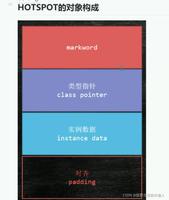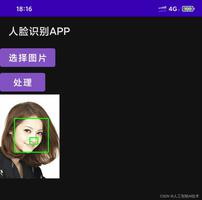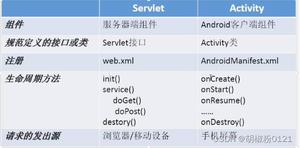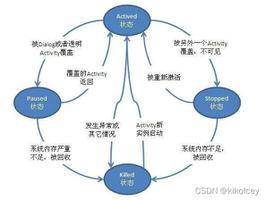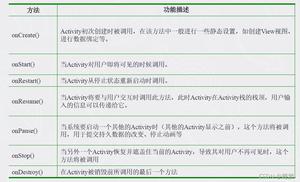Android 中利用 ksoap2 调用 WebService的示例代码
去年刚刚工作的时候,第一个项目是要访问 WebService。由于没有接触过,查了很多资料,在别人代码的基础上稍微修改了一下,总算满足了自己的需求。最近整理电脑的时候,发现了这个 WebService 的访问类,怕哪一天需要的时候找不到了,干脆写在博客上吧,也给需要的人提供一个参考。
1.下载 ksoap2 的 jar 文件
下载地址:ksoap2-android-assembly-3.6.1-jar-with-dependencies.jar
下载完成后依赖到自己的项目中即可。
2.封装网络访问工具类
直接贴代码了,注释写的很详细,根据自己的需要加以修改。
/**
* 访问 WebService 的工具类
*/
public class WebServiceUtil {
// 命名空间
private static final String NAMESPACE = "your namespace";
// WebService 服务器地址
private static final String ENDPOINT = "your address";
// 一般自己公司开发都是需要身份验证的
// 身份验证方法名
private static final String ID_HEADERNAME = "verify method";
// 身份验证 key
private static final String ID_NAME_PARAM = "verify key1";
// 身份验证 value
private static final String ID_NAME_VALUE = "verify value1";
// 身份验证 key
private static final String ID_PASSWORD_PARAM = "verify key2";
// 身份验证 value
private static final String ID_PASSWORD_VALUE = "verify value2";
// 访问的服务器是否由 dotNet 开发
public static boolean isDotNet = true;
// 线程池的大小
private static int threadSize = 5;
// 创建一个可重用固定线程数的线程池,以共享的无界队列方式来运行这些线程
private static ExecutorService threadPool = Executors.newFixedThreadPool(threadSize);
// 连接响应标示
public static final int SUCCESS_FLAG = 0;
public static final int ERROR_FLAG = 1;
/**
* 调用 WebService 接口
*
* @param methodName WebService 的调用方法名
* @param mapParams WebService 的参数集合,可以为 null
* @param reponseCallBack 服务器响应接口
*/
public static void call(final String methodName, SimpleArrayMap<String, Object> mapParams, final ResponseCallBack reponseCallBack) {
// 创建 HttpTransportSE 对象,传递 WebService 服务器地址
final HttpTransportSE transport = new HttpTransportSE(ENDPOINT);
transport.debug = true;
// 身份验证(如果需要的话)
Element[] header = new Element[1];
// 传入命名空间与验证的方法名
header[0] = new Element().createElement(NAMESPACE, ID_HEADERNAME);
// 创建参数 1
Element userName = new Element().createElement(NAMESPACE, ID_NAME_PARAM);
userName.addChild(Node.TEXT, ID_NAME_VALUE);
header[0].addChild(Node.ELEMENT, userName);
// 创建参数 2
Element password = new Element().createElement(NAMESPACE, ID_PASSWORD_PARAM);
password.addChild(Node.TEXT, ID_PASSWORD_VALUE);
header[0].addChild(Node.ELEMENT, password);
// 创建 SoapObject 对象用于传递请求参数
final SoapObject soapObject = new SoapObject(NAMESPACE, methodName);
// 添加参数
if (mapParams != null) {
for (int index = 0; index < mapParams.size(); index++) {
String key = mapParams.keyAt(index);
// 多数情况下,传递的参数都为 String 类型,不过少数情况下会有 boolean 类型,所以用 Object 代替
Object value = mapParams.get(key);
soapObject.addProperty(key, value);
}
}
// 实例化 SoapSerializationEnvelope,传入 WebService 的 SOAP 协议的版本号
// 这里有 VER10 VER11 VER12 三种版本,根据自己需要填写
final SoapSerializationEnvelope envelope = new SoapSerializationEnvelope(SoapEnvelope.VER11);
envelope.headerOut = header; // 身份验证(如果需要的话)
envelope.dotNet = isDotNet; // 设置是否调用的是 .Net 开发的 WebService
envelope.bodyOut = soapObject; // 传递参数
//envelope.setOutputSoapObject(soapObject);// 与上一句等价
// 用于与主线程通信的 Handler
final Handler responseHandler = new Handler() {
@Override
public void handleMessage(Message msg) {
super.handleMessage(msg);
// 根据消息的 arg1 值判断调用哪个接口
if (msg.arg1 == SUCCESS_FLAG) {
reponseCallBack.onSuccess((String) msg.obj);
} else {
reponseCallBack.onError((Exception) msg.obj);
}
}
};
// 提交一个子线程到线程池并在此线种内调用 WebService
if (threadPool == null || threadPool.isShutdown()) {
threadPool = Executors.newFixedThreadPool(threadSize);
}
threadPool.submit(new Runnable() {
@Override
public void run() {
String result = null;
try {
// 解决 EOFException
System.setProperty("http.keepAlive", "false");
// 连接服务器,有的服务可能不需要传递 NAMESPACE + methodName,第一个参数传递 null
transport.call(null, envelope);
if (envelope.getResponse() != null) {
// 获取服务器响应返回的 SoapObject
SoapObject object = (SoapObject) envelope.bodyIn;
result = object.getProperty(0).toString();
}
} catch (IOException e) {
// 当 call 方法的第一个参数为 null 时会有一定的概念抛 IO 异常
// 因此需要需要捕捉此异常后用命名空间加方法名作为参数重新连接
// e.printStackTrace();
try {
transport.call(NAMESPACE + methodName, envelope);
if (envelope.getResponse() != null) {
// 获取服务器响应返回的 SoapObject
SoapObject object = (SoapObject) envelope.bodyIn;
result = object.getProperty(0).toString();
}
} catch (Exception e1) {
// e1.printStackTrace();
responseHandler.sendMessage(responseHandler.obtainMessage(0, ERROR_FLAG, 0, e1));
}
} catch (XmlPullParserException e) {
// e.printStackTrace();
responseHandler.sendMessage(responseHandler.obtainMessage(0, ERROR_FLAG, 0, e));
} finally {
// 将获取的消息利用 Handler 发送到主线程
responseHandler.sendMessage(responseHandler.obtainMessage(0, SUCCESS_FLAG, 0, result));
}
}
});
}
/**
* 设置线程池的大小
*
* @param threadSize
*/
public static void setThreadSize(int threadSize) {
WebServiceUtil.threadSize = threadSize;
threadPool.shutdownNow();
threadPool = Executors.newFixedThreadPool(WebServiceUtil.threadSize);
}
/**
* 服务器响应接口,在响应后需要回调此接口
*/
public interface ResponseCallBack {
void onSuccess(String result);
void onError(Exception e);
}
}
3.在 Activity 中使用
private void request() {
SimpleArrayMap<String, Object> map = new SimpleArrayMap<>();
map.put("key1", "value1");
map.put("key2", "value2");
WebServiceUtil.call("method name", map, new WebServiceUtil.ResponseCallBack() {
@Override
public void onSuccess(String result) {
// 请求成功
}
@Override
public void onError(Exception e) {
// 请求失败
}
});
}
至此调用结束,有需要访问 WebService 的同学可以参考一下。
以上是 Android 中利用 ksoap2 调用 WebService的示例代码 的全部内容, 来源链接: utcz.com/z/361485.html

